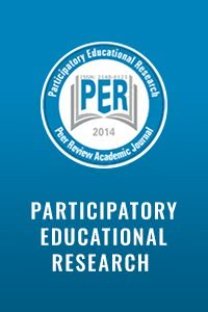Investigation the Technology Usage Level of Teacher Candidates
Computer usage level, technology usage level digital competence level, teacher candidate, technology integration, information and communication technologies,
___
- Açıkgöz, Ü. K. (2005). Active learning. Izmir: Education World Publications.
- Akkoyunlu, B., & Soylu, Y. (2010). A study on teachers’ digital empowerment. Turkish Librarianship, 24(4), 748-768.
- Akkoyunlu, B., Soylu, M. Y., & Caglar, M. (2010). A study on developing “Digital Empowerment Scale” for university students. Hacettepe University Journal of Education, 39(39), 10-19. Akpinar, Y. (2003). The effect of higher education in the use of new information technologies by the teachers: the case of Istanbul schools. The Turkish Online Journal of Education Technology, 2(2), 79-96.
- Ala-Mutka, K., Punie, Y., & Redecker, C. (2008). Digital competence for lifelong learning. Institute for Prospective Technological Studies (IPTS), European Commission, Joint Research Centre. Technical Note: JRC, 48708, 271-282.
- Bandura, A. (1986). Social foundations of thought and action. Englewood Cliffs, NJ: Prentice Hall.
- Bawden, D. (2001). Information and digital literacies: a review of concepts. Journal of documentation, 57(2), 218-259.
- Calik, T., & Sezgin, F. (2005). Globalization, information society and education. Kastamonu Education Journal, 13(1), 55-66.
- Chen, X. (2004). A study of stages of concern, layers of adoption, encouraging and obstructive factors about integrating information technology into instruction in junior high school language domain teachers in Kaohsiung City, Unpublished Master Degree Thesis, National Sun Yat-sen University, Kaohsiung, Taiwan.
- Erkan,S.(2004). A survey of teachers ' attitudes toward computers. Manas Journal of Social Studies, 12.
- Goktas, Y., Yildirim, Z., & Yildirim, S. (2008). Status of ICT in schools of teacher education: Deans’ views. Education and Science, 33(149), 30-50.
- Hu, S., and Kuh, G. D. (2002). Being (Dis)Engaged in Educationally Purposeful Activities: The Influences of Student and Institutional Characteristics. Research in Higher Education, 43(5), 555.
- Jung, I. (2005). ICT-Pedagogy integration in teacher training: application cases worldwide. Educational Technology and Society, 8(2), 94-101.
- Karasar, N. (1999). Research Method. Ankara: Nobel Publishing.
- Krumsvik, R. J. (2008). Situated learning and teachers’ digital competence. Education and Information Technologies, 13(4), 279-290.
- Mäkinen, M. (2006). Digital empowerment as a process for enhancing citizens' participation. E-learning and Digital Media, 3(3), 381-395.
- O'reilly, T. (2007). What is Web 2.0: Design patterns and business models for the next generation of software. Communications & strategies, (1), 17.
- Timur, B., Timur, S., & Akkoyunlu, B. (2014). Determinig pre-service teachers’ digital empowerment level. Mugla Sitki Kocman University Institute of Social Sciences Journal, (33), 41-59.
- Yildiz, C., & Kaya, M. K. (2012). An investigation into high school students’ digital literacy level. Usak University Journal of Social Sciences, 2012,(11), 82-96.
- Zhou, L., Burgoon, J. K., Zhang, D., & Nunamaker, J. F. (2004). Language dominance in inter personal deception via computer-mediated communication. Computers in Human Behavior, 20(3), 381-402.
- ISSN: 2148-6123
- Yayın Aralığı: Yılda 6 Sayı
- Başlangıç: 2014
- Yayıncı: Özgen KORKMAZ
Betül Ayşe SAYIN, Musa Mükerrem ASLAN
Agâh Tuğrul KORUCU, Ahmet YÜCEL, Mustafa M. GÜNDOĞDU, Tarık GENÇTÜRK
Güntay TAŞÇI, Maike LOOSS, Halil YURDUGÜL, Dagmar Hilfert RUPPELL, Ali SÜLÜN, Dagmar HİNRİCHS, Sedat AYDOĞDU, Konstantin KLİNGENBERG, Fehime Şeyma TAŞ
Hülya KARTAL, Yakup BALANTEKİN, Asude BİLGİN
